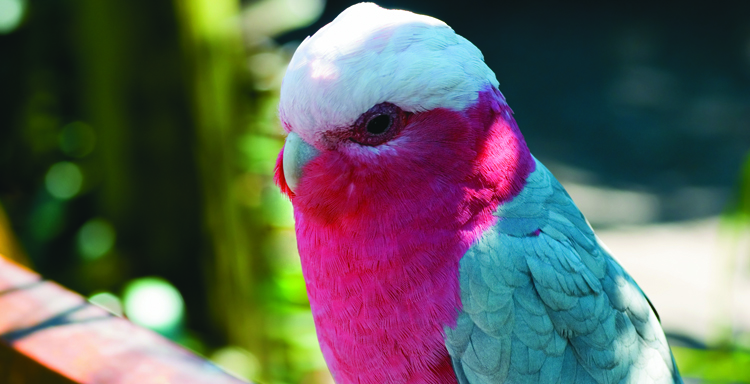True Aussie
The galah is as Australian as its name.
A pigeon-sized member of the cockatoo family, close cousin to the parrots, it is ubiquitous and seems to have thrived since the human population of Australia started to grow with the arrival of European settlers. They have a grey back and wings, a deep pink everywhere else, and a pale pink crest. The sexes differ only in the colour of the iris of the eye.
Larrikin
It is easy to anthropomorphise them – they do seem to have the character of the popular view of the Australian – cheerful, gregarious, easy-going and adaptive, and they are certainly popular with most Australians, who perhaps identify with their noisy, inquisitive and larrikin attitude to life.
The term “galah”, in Aussie English, means “clown” or “fool” when applied to a person, especially when a lot of talking seems to be involved. Galahs in the wild gather in groups, sometimes huge flocks, and even a small gathering makes itself heard. Their natural voice is a screech, and they all talk at once. They are sedentary – not in the human, or couch-potato sense, but in the sense that they tend to stay in one area all the time. They can become quite tame and tolerant of humans, and will happily accept hand-outs once they get to know you.
Inhabitants of open ground near trees – parkland – they have benefited from the clearing of dense bush land for agricultural purposes, and irrigation schemes. They have in the process become an agricultural pest in some areas, living as they do on grain and seeds and grasses, and in large numbers can cause considerable damage to grain crops.
They appear almost everywhere in Australia, and their name is borrowed from the Aboriginal Yuwaalaraay language, of northern New South Wales. Early settlers and travellers are said to have eaten them, and there have been recipes published in recent years for galah broth and roast galah. Each to his own taste, but where the population has exploded and serious crop damage is being caused, it makes sense to recycle a pest through the food chain.
Kibbutznik
While very gregarious, they have distinct personalities, and their independent character may be formed by their unusual, kibbutznik way of bringing up their newly-fledged offspring. Rather than remain in the family group, the newly-fledged young are assembled in a crèche tree, and watched over by specially-appointed nanny birds. Their parents are thus free to concentrate on the unfledged siblings, but still make the journey to the nursery tree to feed their own chicks for a while. Contact is broken off quite soon, however, and the young galah is on its own from about three months old.
Life-long Companions
Galahs pair for life, reaching maturity at about four years old. They can live for a very long time, especially in captivity. They make good pets and companion animals and are good talkers. Not in the same class as African Greys, but head and shoulders above the best South Americans. In the wild they are natural aerobats, performing stunts for the sheer joy of it. This comical, devil-may-care personality makes them attractive to people looking for companionship. A word of caution – they bond for life, and have been known to outlive their owners.
Pest or friend for life, there is no getting away from the cheeky, raucous galah and its refreshing zest for life. As much a part of the Australian landscape as the gum tree and the kangaroo.
